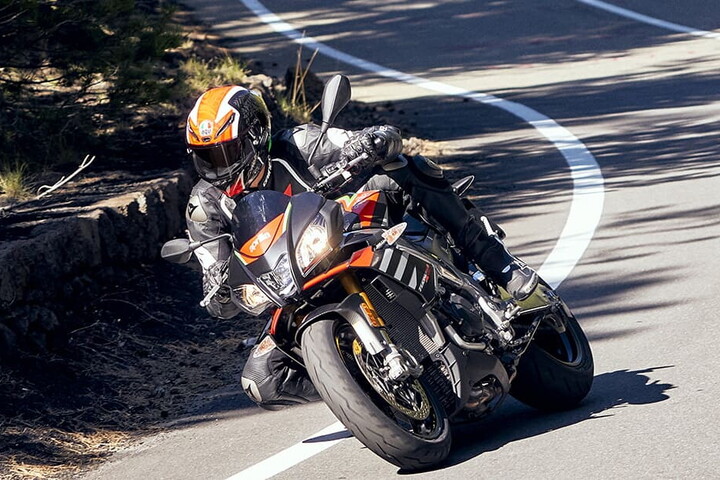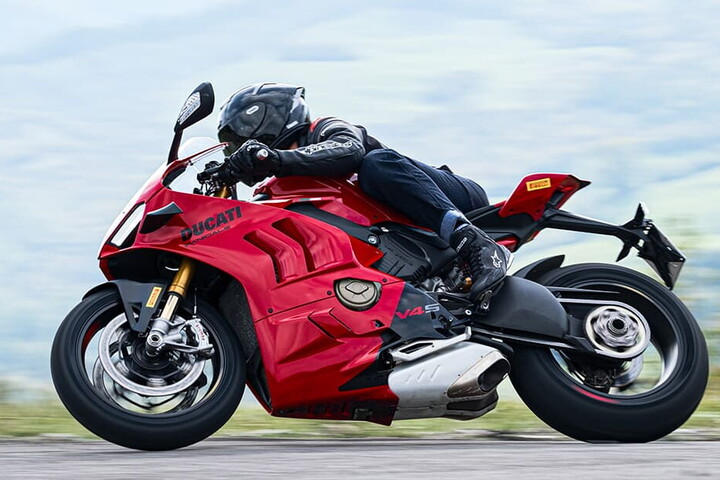One of the most fundamental and debated topics in motorcycle riding is the line you should take through a bend. The classic theory is quite simple: brake wide as you enter the corner, release the brakes and aim for the apex (cutting the bend tighter), then accelerate out, widening your line again. Of course, there are variations depending on riding style, bike type, and the specific road, but the core concept is generally clear. On the track, we see professional riders execute this with incredible aggression and confidence. But there are special conditions there: no opposing traffic, perfect asphalt, and ample run-off areas.
On the road, our primary goal is safety, not performance. Plus, we absolutely have to follow the Highway Code. What's more, those three ideal track conditions almost never happen simultaneously on public roads. Specifically (and unfortunately), the hardest condition to find is the third one: instead of run-off areas, we have guardrails, walls, trees, and on-coming vehicles. This means we have very strict limits; on the road, we simply can't follow "racer" lines, even while staying in our own lane. And that lane is actually much narrower than you might think. Let's see why.

Road limitations
Consider the most common scenario: a two-way road. We can't use our entire lane because we always need to maintain a good safety margin on both sides. On our side, we can't get too close to the edge of the asphalt because it's often dirty, there might be gravel or soil, and sometimes it's even damaged. In a car, this is usually fine, but on a motorcycle, you could lose grip and fall.
We also can't push towards the opposite side of our lane. We are vulnerable road users, and if another vehicle – a car, a lorry – even slightly invades our lane, we risk an accident, which is never pleasant even if we're in the right.
What's more, in most countries around the world, the law requires motorcyclists to ride as close as safely possible to the edge of their lane (right or left, depending on the country).
So, how exactly do we use the road then? With common sense.

Common sense and regulations
There are differences between right-hand and left-hand bends. Considering a country with right-hand traffic (the reasoning is mirrored for countries with left-hand traffic), the correct approach to taking a right-hand bend, while respecting the highway code, is as follows.
• Brake while moving towards the centre of the road, but maintain a safety margin from the centreline that separates you from on-coming vehicles.
• Ease off the brakes, releasing them as you move towards the apex.
• Ride through the bend with a moderate lean and towards the exit, then progressively accelerate out, realigning while again maintaining a safety margin from the centreline.
The concept is the same for left-hand bends. However, if we've just been careful not to get too close to the centreline - both to obey the Highway Code and to maintain a safety margin from on-coming vehicles - this time it's wise not to reach the very edge of the asphalt. Remember, it can be dirty or damaged, which could cause you to lose grip.

Keep in mind for safety
So, on the road, we don't have a wide margin to draw perfect theoretical lines. But we can optimise what we have, always remembering that our goal is to achieve safe and effective riding. For this, we need to keep three fundamental elements in mind:
• Concentration. The road is full of dangers and obstacles. When you ride, you must always be focused on controlling your bike and the environment you're in. You can't ride distracted, and if you're tired, it's best to pull over.
• Sensitivity. Motorcycle riding is complex. It requires balance, mastery of the bike's dynamics, and control over its commands, brakes and engine.
• Anticipation. It's essential to anticipate an obstacle – for example, a pedestrian or cyclist around a bend, or a car performing an incorrect manoeuvre. We must be ready to avoid an accident. This brings us back to the concept of concentration.

Safe riding is the result of a combination of qualities. Manoeuvres should be executed harmoniously and progressively; everything must be co-ordinated with fluid, measured actions on the controls – handlebars, brakes, throttle – avoiding sudden steering, abrupt accelerations, and braking. You also need to be able to assess the quality of the asphalt, as grip can change from one bend to the next. From this perspective, our safety net comes from our tyres, which must be high quality, suitable for your bike, and always in excellent condition regarding pressure and tread depth.
A piece of advice: don't be afraid to be "too" cautious, especially when you're a novice rider. Feel free to let the group pull ahead without worrying about your companions' teasing. Don't rush to learn: speeding doesn't help; in fact, it leads to mistakes.
It takes time to develop a beautiful, elegant, and safe riding style, and to maintain a good pace with clear control skills. The important thing is to master the basics, and with those, you'll be able to keep up with everyone, and with even greater safety.





